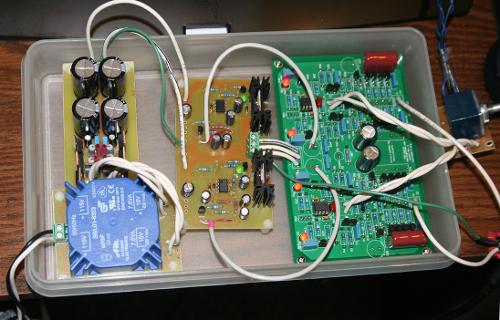Ikarios
1000+ Head-Fier
- Joined
- May 23, 2006
- Posts
- 1,408
- Likes
- 21
Could the 20k pot requirement be circumvented with a 10K pot and a 10K resistor hooked in-line with the pot, connected via a "gain switch"? With the resistor connected (switch on) you have basically the second half of the 20K pot; with the resistor detached (switch off, direct connection) you have the bottom half of the 10K pot. Am I doing this right?







